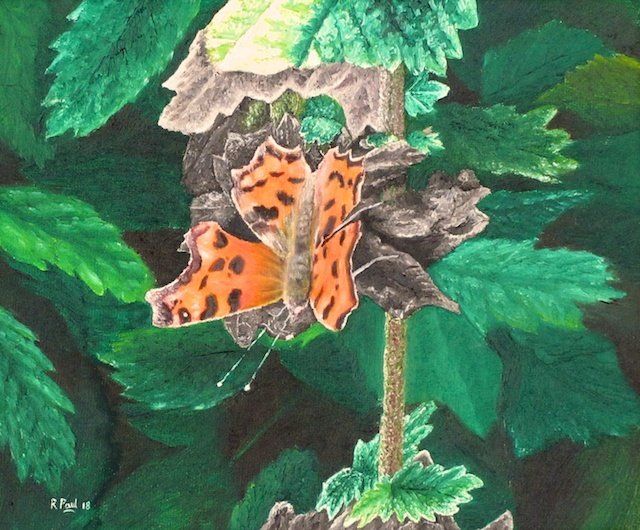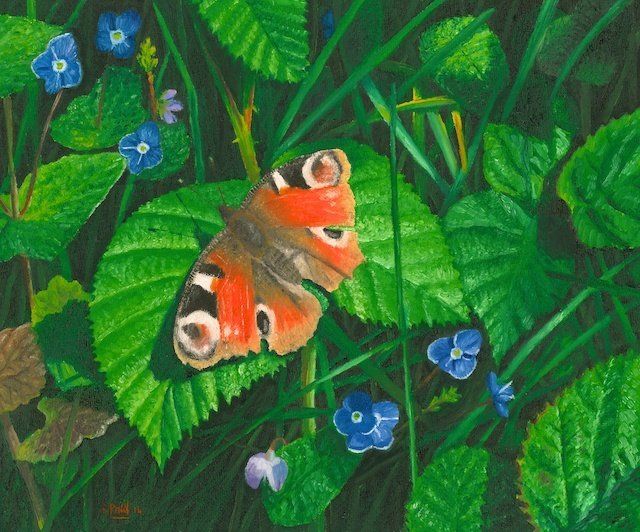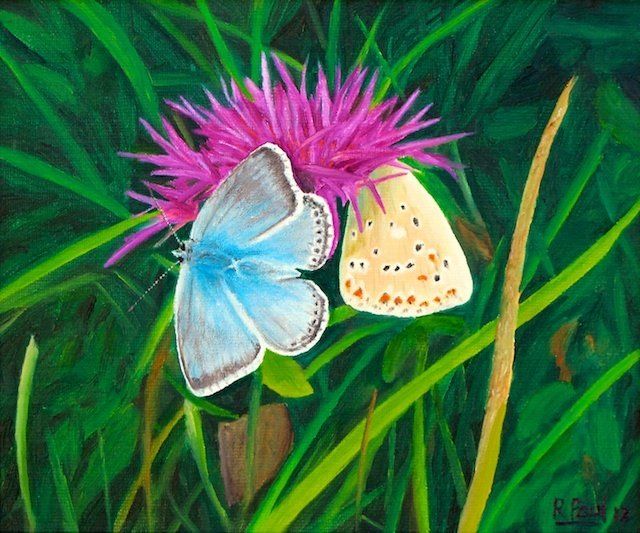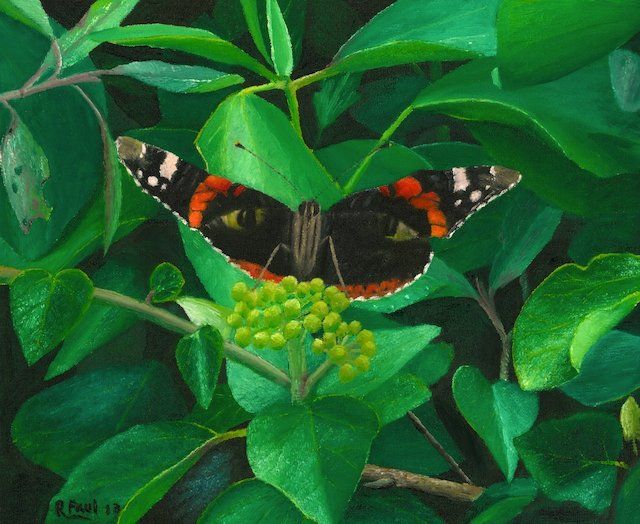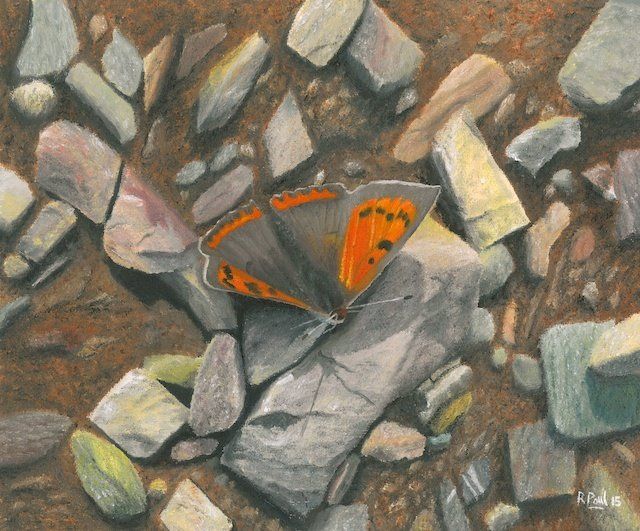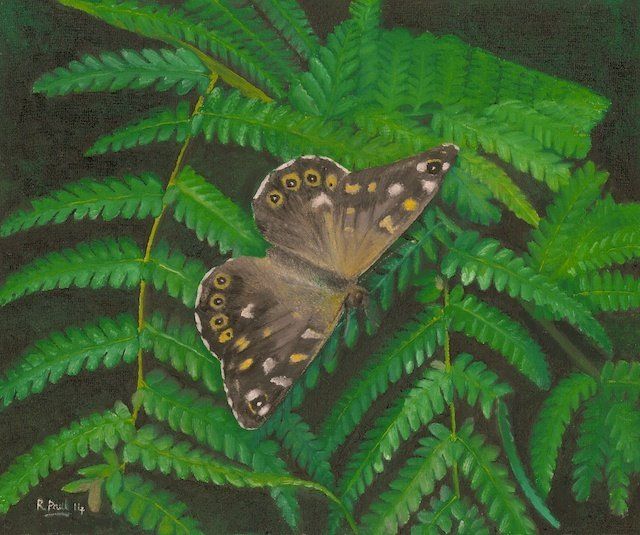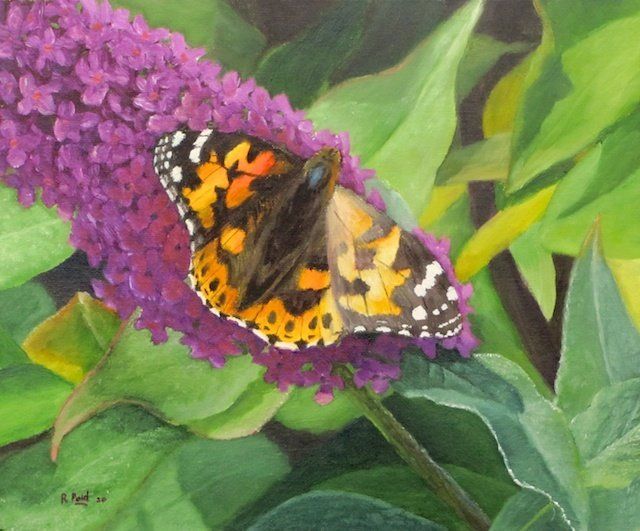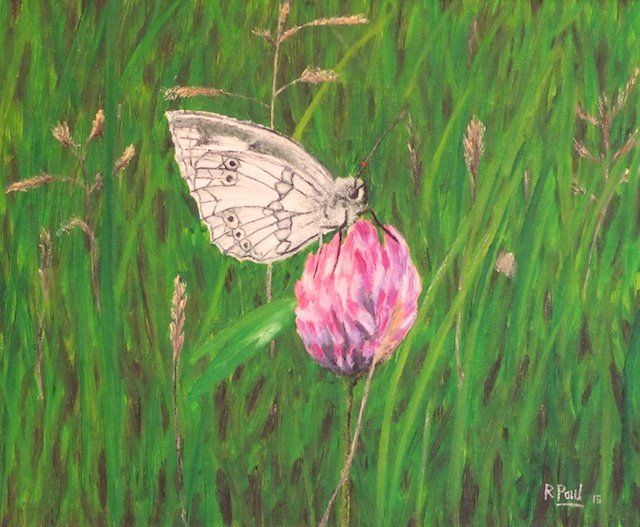Butterflies
All painted on 12x10 inch board in oils
Comma
The comma is easily recognised by the 'ragged' or sculpted edge to its wing. Its name comes from a small white splodge on the underside.
Peacock (X)
There are two times of year when peacock butterflies appear. This is an early one that is a little battered from overwintering in some warm dry place. It has come out to find a mate, laying the eggs for the summer brood.
Red Admiral
I'd never seen this in a red admiral before. Look online or in the books and they show the wings from above, or rarely a glance of the underside but with only a hint of greeen in a partly folded wing. Here though I caught the full underside as the butterfly was feasting on ivy in late Autumn. The full wing shows what looks like a convincing pair of eyes.
Copper
One of our smaller butterflies but still worth looking out for. I found this specimen resting on a stone on a path I was walking, somewhere around the Welsh coast.
Painted Lady
I never knowingly saw one of these until a couple of years ago, as I had not really observed them and just assumed they were red admirals flashing orange white and brown wings at me.
Tortoiseshell
Another of the smaller butterflies, but with a little sky blue contrasting the orange and brown of its wings.
So when can you find these and other British butterflies in the wild? First of all you need a warm or hot sunny day with little or no wind. After that its down to the month, the terrain and aspect of slope. Blues for instance fly only on South facing chalk terrain. There is not room to give you all the information, but the pictogram below may help.
Prints of my butterfly paintings can be found at Redbubble.com
